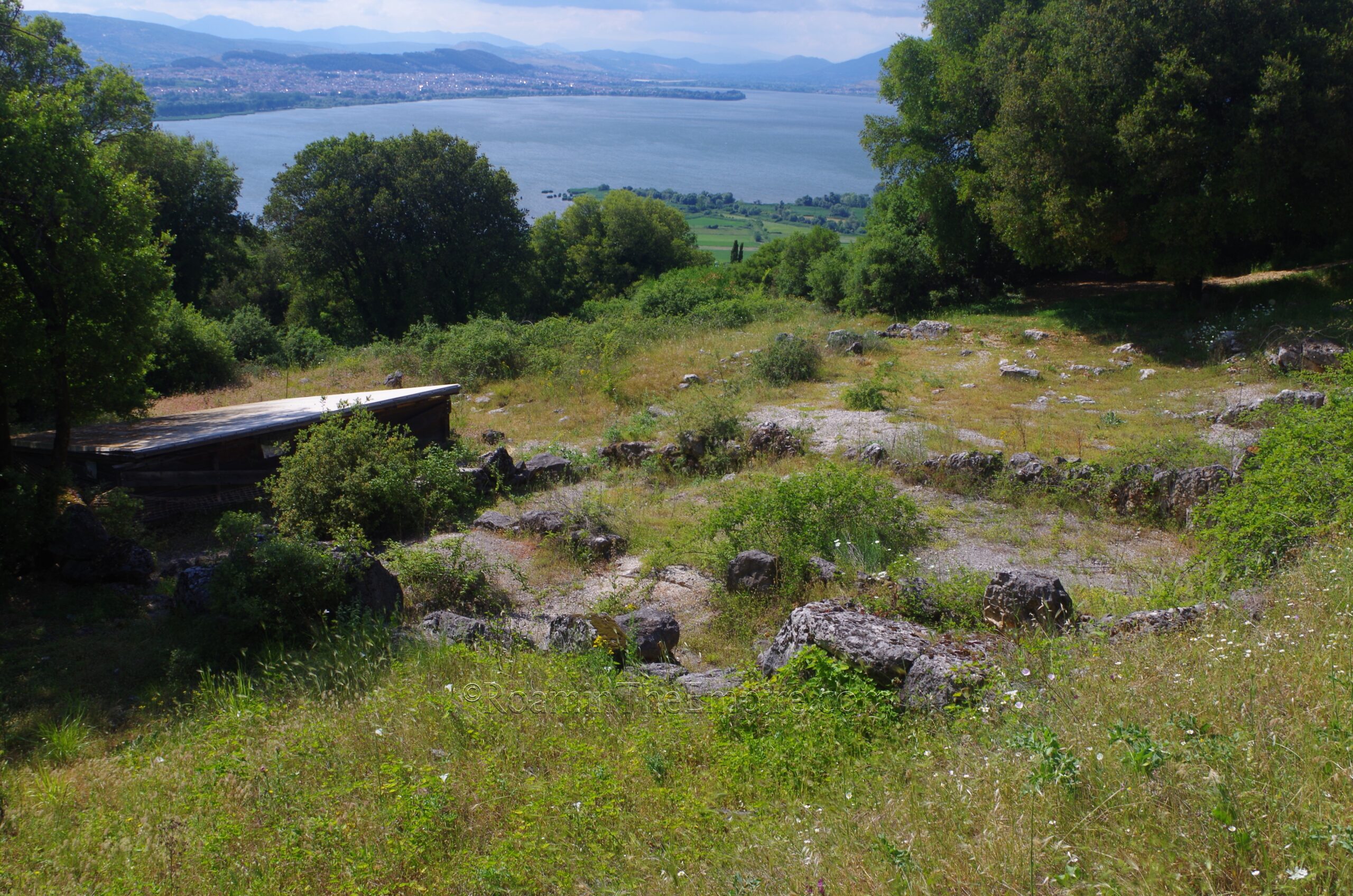
Most Recent Visit: May 2021
Located on a hill to the east of the modern western Greek city of Ioannina, in the region of Epirus, near the town of Kastritsa, are the remains of an ancient settlement. The ancient town has not been conclusively identified, though there are two Molossian settlements that seem to get identified with the archaeological remains most frequently. The first of those is Eurymenai or Eurymenae. Eurymenae was inhabited by the Arktanoi population of Molossians, and is mentioned by Diodorus Siculus as the city to which the the Epriote king Alcetas fled following the surrender or defection of the Epriote army to Cassander’s general Lyciscus around 312 BCE, during the Wars of the Diadochi. The city is then besieged and sacked by Lyciscus. Aside from this episode, though, little is known about Eurymenae other than the general location, which fits with a possible identification for the Kastritsa site.
The other possible identification for the remains is that of Tecmon (or Tekmon). A distinctly different settlement than Eurymenae, Tecmon is similarly seldom mentioned in the sources, contributing to the inability to conclusively determine the location. Tecmon is mentioned by Livy, though, as being one of the four Molossian cities that did not surrender immediately to Lucius Anicius Gallus, propraetor of Illyria at the time, when he entered Epirus in 168-67 BCE. It is unclear of the city was besieged, but the chief magistrate of the city was put to death for his defiance and the city was surrendered to the Romans. Much later, Stephanus of Byzantium erroneously identified Tecmon’s location as being in Thesprotia.
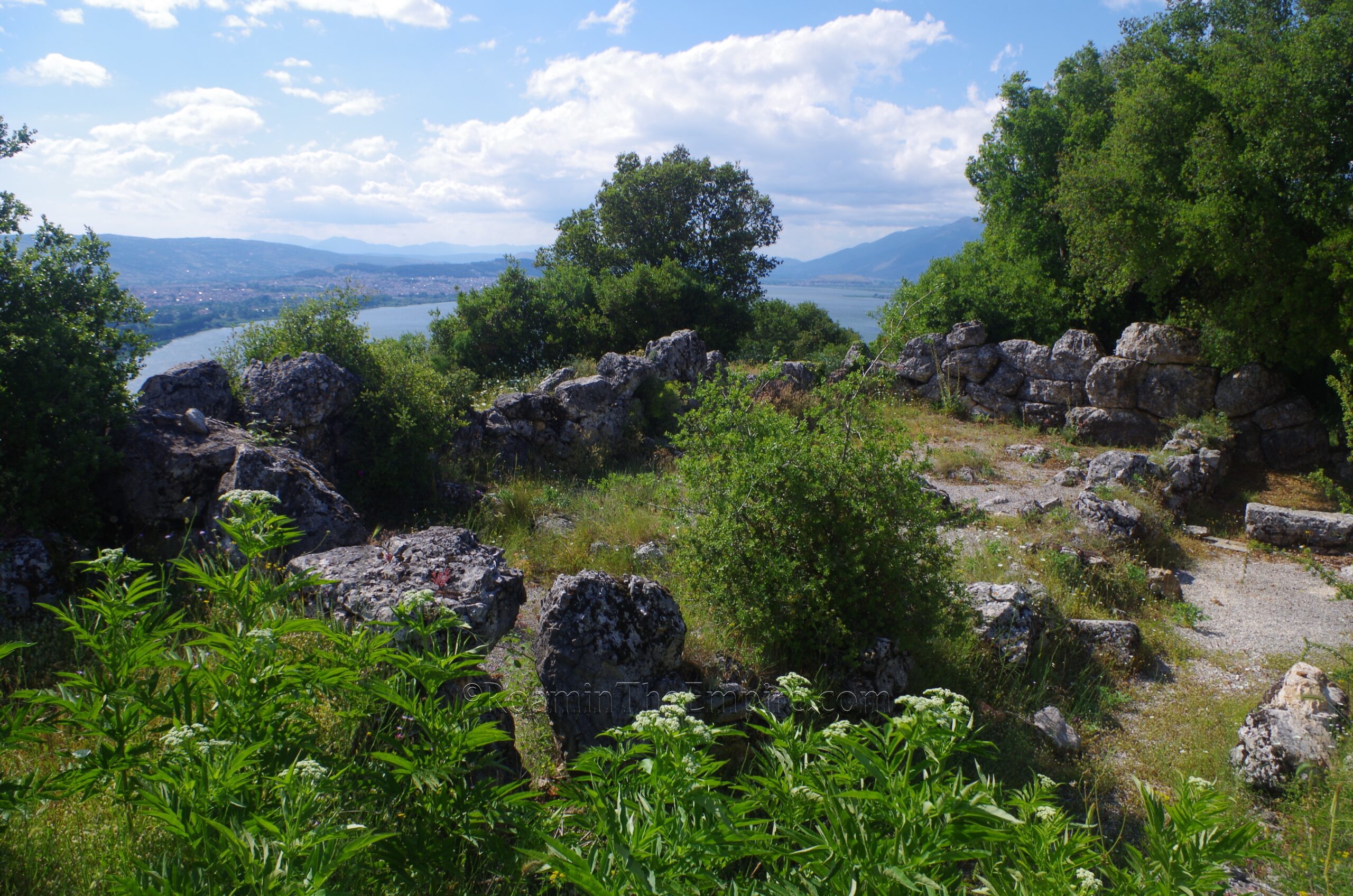
Archaeologically, identifiable habitation on the Kastri Hill dates back to at least 22,000 years ago. The acropolis structures here, though, do not seem to have been established until roughly the early 3rd century BCE. Perhaps a result of the fortification network of King Pyrrhus of Epirus around that time. A destruction event at the site coincides with the Roman campaign in 168 BCE. A more limited occupation occurred following this instance, and the site still had relatively significant habitation until the 6th century CE, when it was largely abandoned in favor settlements on the plains below. The site was reoccupied during the Ottoman period and later in a primarily military capacity, of which significant vestiges still remain.
Getting There: Getting to Ioannina isn’t terribly hard, as it is a relatively significant city in the region and is reachable by bus from other cities in the region. But, like many places in this part of Greece, does not have train service. But, even getting to the Kastri Hill from Ioannina by public transport is difficult. A private vehicle is probably the most reliable means. Near the apex of the hill is the Moni Agiou Ioanni, a monastery. A paved, but somewhat precarious road leads up to the monastery on the west side of the hill. There is parking available here, and the entrance to the archaeological site is a short walk up hill to the west of this parking area. There is a closed gate at the entrance of the site, but the door is unlocked; the fence seems primarily aimed at keeping wildlife out of the archaeological area rather than limiting access. With that in mind, it is best to keep the gate closed except when entering or exiting.
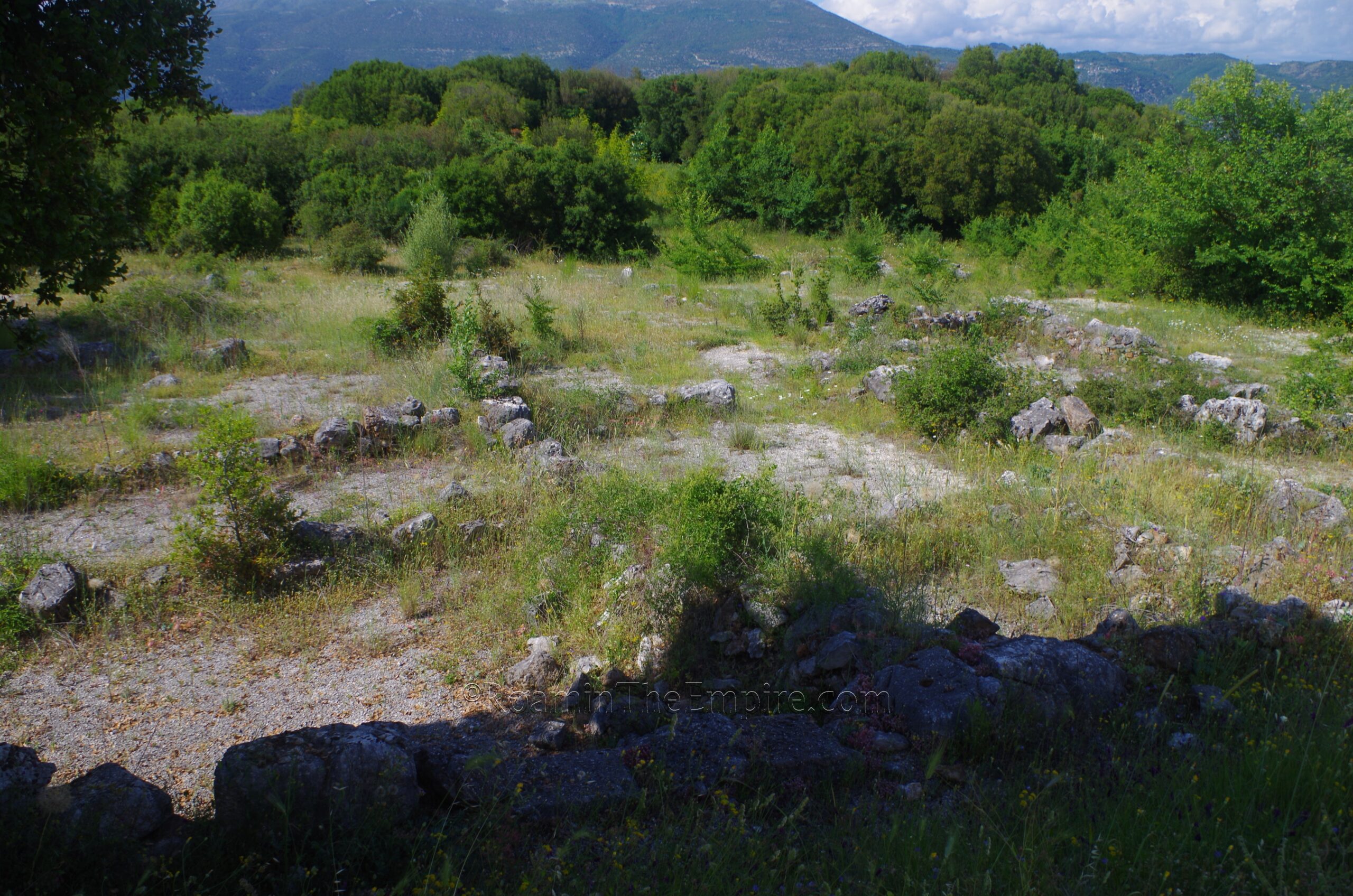
There is not a whole lot remaining of the ancient settlement on the hill, and there are a number of later structures dating to the last 200 years or so scattered around. The primary ancient excavations are grouped into 4 areas that are encountered heading up the pathway from the entrance to the site, each marked with an informational board in English and Greek. The first area is the so-called Building Complex E, which is to the west from the entry area. The building here seems to have had habitation through the breadth of the life of the ancient settlement; from the 3rd century BCE through the 6th century CE. The building faced on to one of the main roads through the site and appears to have had a second story. It was decorated with mosaics and tiling and had a bathing area, all of which suggest it was a relatively important building in the city. To the southwest is a cistern associated with the structure, which was restored with waterproof lining sometime after the 168 BCE Roman destruction. The cistern is presently almost entirely obscured by an enclosure.
Up the hill to the west is another complex of buildings (Γ, ΣΤ, Z, H, Θ) with a similar span of occupation. Based on the finds and the layout of these structures, their use appears to be domestic or craft producing in nature. While the footprint of the buildings seems to have remained consistent throughout the occupation, the internal structure and layout changed several times over the course. A pair of later cist graves were found among the buildings here.
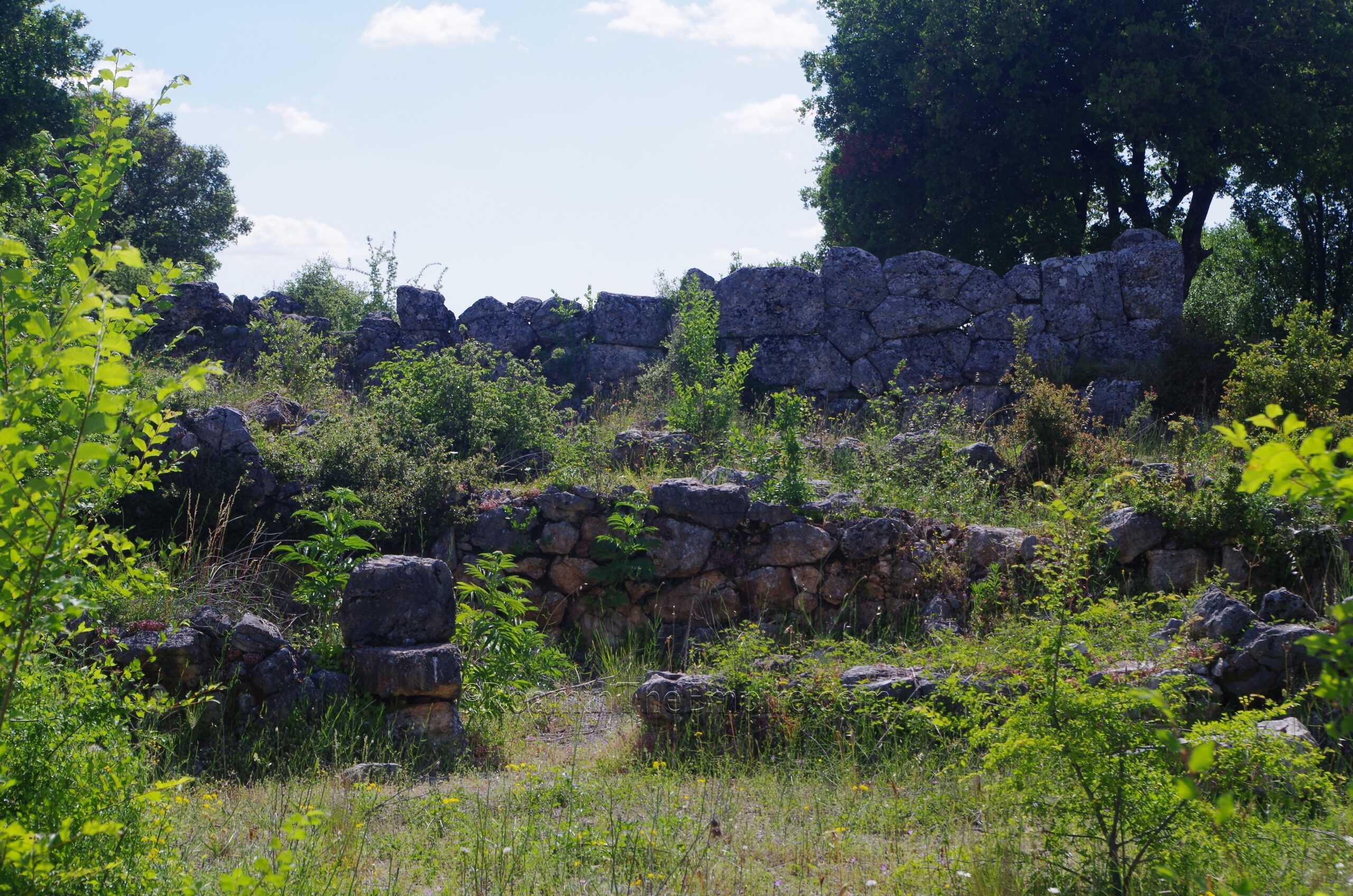
Just to the west of this complex are some of the remains of the fortifications of the city, dating originally to the 3rd century BCE. These stretch along the ridge of the hill and delineate the eastern extent of the acropolis area. The walls are pretty fragmentary in some places, but there’s still ample stone deposit to be able to follow their course. Following along the wall to the north about 175 meters eventually reaches one of the gates of the city, Gate II. The form is still visible with an opening that faces to the south, where ingress to the city would have come up the slope of the hill. This gate was toward the middle of the eastern course, but there are no usable trails that follow the walls farther to the north.
From here, one can double back along the walls and follow them farther to the south from the point where the complex of multiple structures is. The walls are quite robust and clear in some places. This eventually leads to a pretty well preserved stretch of the eastern walls, including Gate I, and another complex of buildings, Complex K. Gate I is not really as clearly defined as Gate II, the form is hard to discern from the presently standing remains of it. Similarly, Complex K, which abuts the wall just to the south of Gate I, is not very well preserved, or at least is not very clearly exposed, and it’s hard to see really anything that remains of it. The only real indication of its presence is the sign indicating the location of the gate and complex.
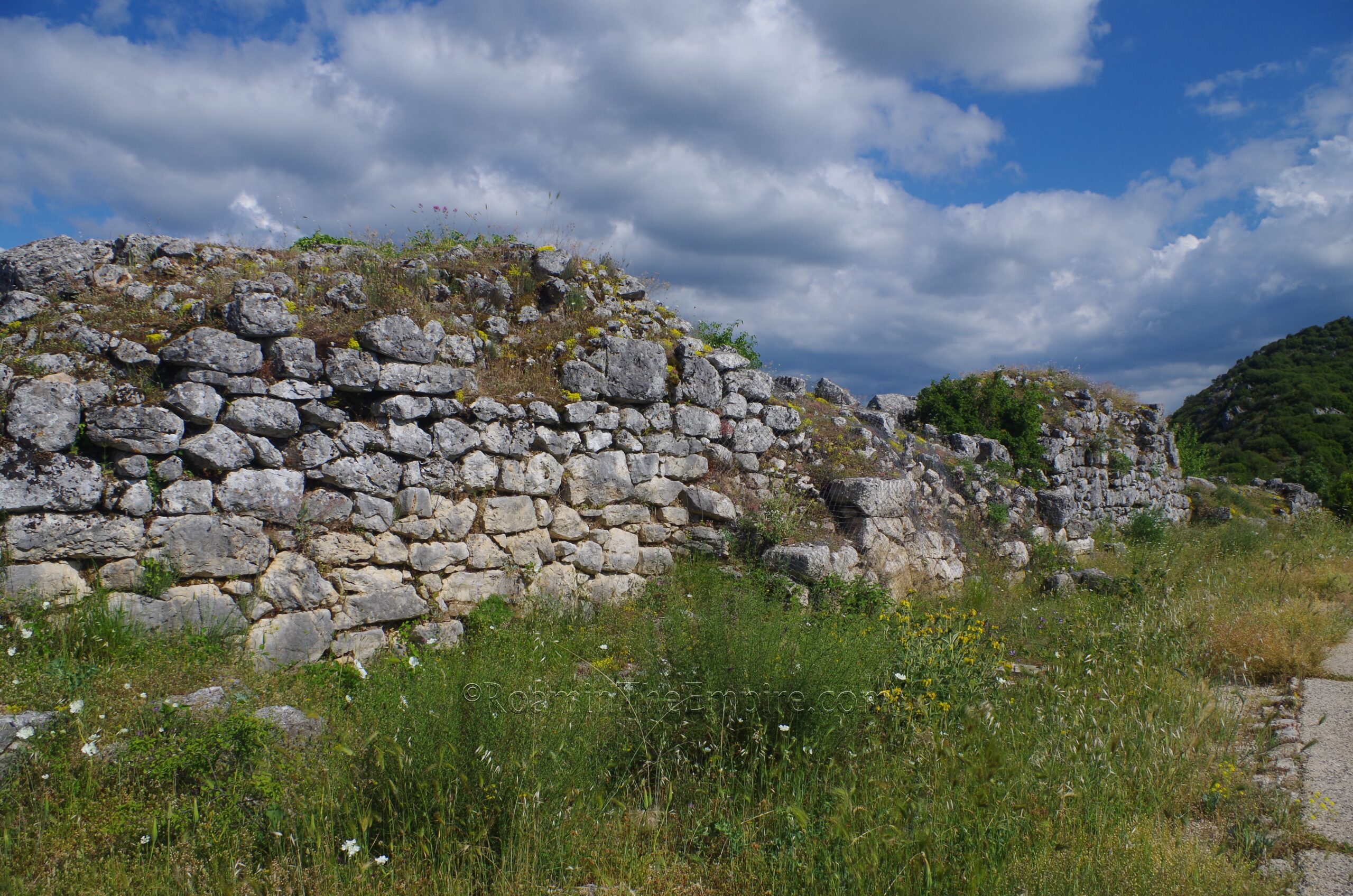
A little bit farther south is the southern edge of the settlement, where the fortification walls turn and head to the west after jutting southward briefly. This area also has some infrastructure related to the tourism of the site, as this southern area seems to have originally (or perhaps for the future) been planned as the primary entrance to the site, despite the dirt road leading up to it being much less hospitable than the paved road leading up to the monastery.
I spent about a half an hour inside the archaeological area. There’s not a ton to see here, honestly. It was interesting, though. It does offer amazing views of the surrounding area as well. There are a few signs in English and Greek scattered around the site, and a fairly distinct, paved walking path guides visitors through some areas, but in other areas it is mostly a well-worn dirt path. It’s certainly worth a short stop if in the area, but might not be a draw from further afield.
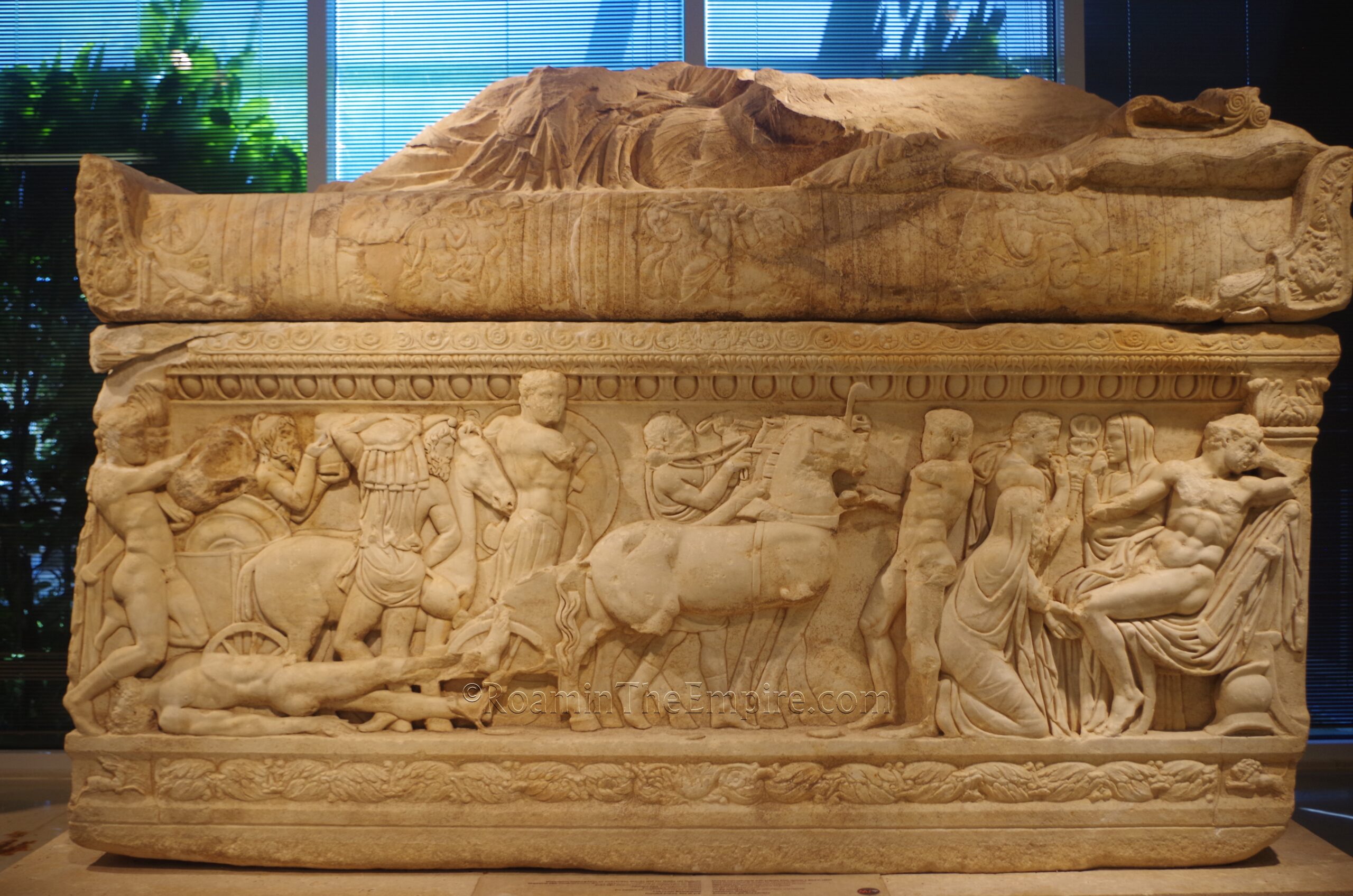
Also worth seeing in this area is the Archaeological Museum Ioannina, about 7 kilometers away in central Ioannina. The museum is located at 25is Martiou 6. The address is a little misleading as the building isn’t actually on the street on which it has it’s address, but faces on to the adjacent street, Karapanou. During the summer (April through October), the museum is open every day except Tuesday from 8:00 to 20:00, and is closed on Tuesday. The rest of the year, the hours change to 8:30 to 15:30, with the museum remaining closed on Tuesdays. Admission is also tiered depending on the season, with the summer admission being 6 Euros and the rest of the year it is reduced to 3 Euros.
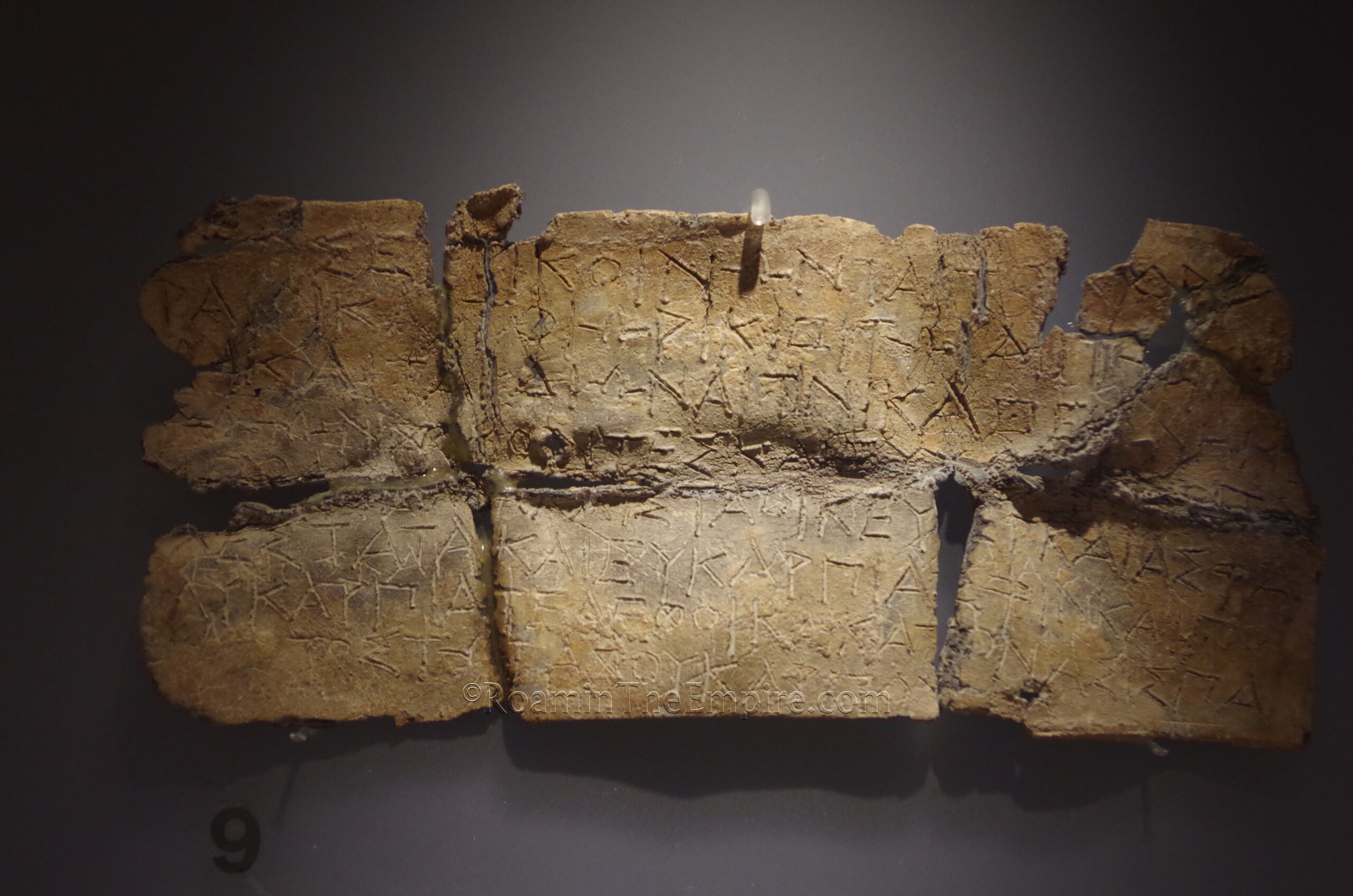
There are a few finds, but not many, from the Tecmon/Eurymenae site, or objects found in modern Ioannina that may have originated from the settlement at Kastritsa. The archaeological museum, though, is a regional one and has objects from as far afield as Nicopolis, though the primary collection of objects from that site is located locally. There are also a number of artifacts from the purported Necromanteion of Acheron, an interesting site near Nicopolis as well as Cassope. This museum is also the primary repository of objects from nearby Dodona, including a large collection of oracular tablets; questions posed by pilgrims to the oracle at Dodona. Some of these date back as far as the 6th century BCE. This collection of over 60 of these oracular tablets is certainly one of the highlights of the collection. A number of other objects, including statuary fragments, inscriptions, votive offerings, and other finds from Dodona are also on display here. The regional coin collection is also quite nice. Another highlight of the collection is a 2nd century CE marble sarcophagus depicting the death of Hector from Ladokhori.
The Archaeological Museum of Ioannina is not exceedingly large, but it does have quite a nice selection of artifacts presented in a modern and interesting way. There is plenty of information presented, usually in English and Greek (both for object specific information and more general information), though a few isolated sections have only Greek information. Both the archaeological museum and the archaeological area of Kastritsa can be done in an afternoon, and the proximity to Dodona make for a good full day between the three of them with Dodona in the morning.
Sources:
Diodorus Siculus. Bibliotheca Historica, 8.40.
Livy. Ab Urbe Condita, 45.26.
Stephanus of Byzantium. Ethnica, T611.21.
Youni, P., C. Kappa, and Y. Faklari. Kastritsa Ioanninon: A Brief Guide of the ArchaeologicalSite. Ioannina: Hellenic Ministry of Culture and Sports, 12th Ephorate of Prehistoric and ClassicalAntiquities, 2015.


